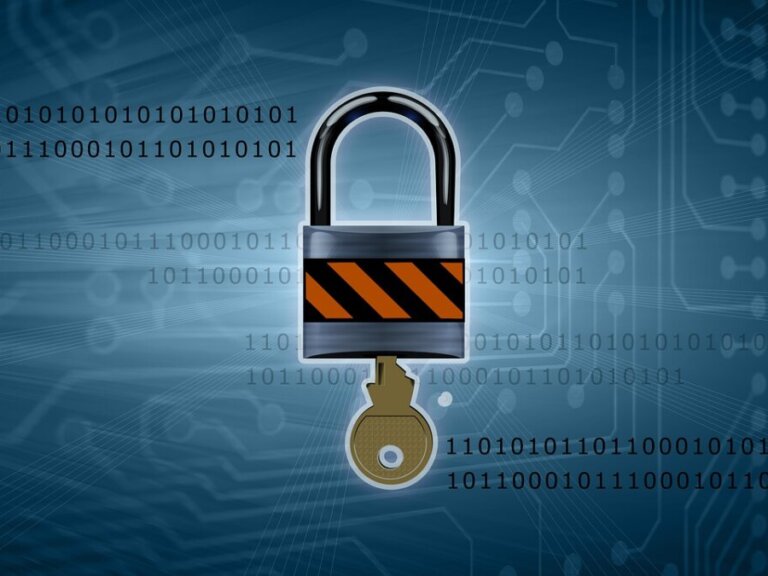Author: Manuel Heck
· 5 mins read · 2,107 views
Understanding IT Security
In today’s digital era, the importance of IT security cannot be overstated. As businesses and organizations rely more on technology and the internet, the risk of cyberattacks and data breaches increases exponentially. This comprehensive guide will cover the essentials of IT security, including its importance, threats, and various solutions to safeguard your digital assets.
What is IT Security?
IT security, also known as information technology security, is the practice of protecting computer systems, networks, and data from unauthorized access, disclosure, alteration, or destruction. It encompasses various strategies, methods, tools, and technologies aimed at securing digital assets and ensuring the confidentiality, integrity, and availability of an organization’s data.
The Objectives of IT Security
The primary objectives of IT security are to maintain the following aspects of an organization’s digital assets:
- Confidentiality: Ensuring that data remains private and accessible only to authorized individuals.
- Integrity: Safeguarding the accuracy and completeness of data by preventing unauthorized modification.
- Availability: Ensuring that data and systems are accessible to authorized users when needed.
By achieving these objectives, IT security helps organizations protect their sensitive information, maintain business continuity, and reduce the risk of financial loss, reputational damage, and legal consequences.
The Importance of IT Security
The growing reliance on technology and the internet for conducting business, storing sensitive information, and communicating with clients and partners have made IT security crucial for organizations of all sizes and industries. Here are some reasons why IT security is so important:
- Data Protection: Organizations store a significant amount of valuable and sensitive data, such as customer information, financial records, intellectual property, and trade secrets. IT security helps safeguard this data from unauthorized access or theft.
- Compliance with Regulations: Many industries have strict regulations and standards for data privacy and security. IT security helps organizations comply with these requirements and avoid penalties or legal consequences.
- Reputation Management: A cyberattack or data breach can severely damage a company’s reputation. By implementing robust IT security measures, organizations can maintain customer trust, protect their brand image, and avoid negative publicity.
- Financial Security: Cyberattacks can lead to substantial financial losses, both directly (e.g., through theft or ransom demands) and indirectly (e.g., through lost business, legal fees, or damage remediation). Investing in IT security helps reduce these risks and maintain financial stability.
- Operational Continuity: Cyberattacks can disrupt business operations by compromising systems or networks. IT security measures help ensure that organizations can continue functioning even in the face of cyber threats.
IT Security in the News
The importance of IT security has been highlighted in recent years by several high-profile cyberattacks and data breaches. These incidents have exposed vulnerabilities in organizations’ IT systems and raised awareness about the need for robust security measures.
Some notable IT security news stories include:
- The WannaCry ransomware attack in 2017, which affected over 200,000 computers in 150 countries and caused an estimated $4 billion in damages.
- The Equifax data breach in 2017, which exposed the personal information of 147 million consumers and resulted in a $700 million settlement.
- The SolarWinds cyberattack in 2020, compromised the networks of multiple US government agencies and private companies through a supply chain attack.
These incidents demonstrate the potential consequences of inadequate IT security and the need for organizations to invest in comprehensive security solutions.
Types of IT Security
IT security encompasses various sub-disciplines and solutions designed to protect different aspects of an organization’s digital infrastructure.
Some key areas of IT security include:
- Identity Security
- Identity security involves the methods and processes used to identify, verify, and authorize machines, devices, users, groups, applications, and functions. This is essential for identity and access management (IAM).
- Network Security
- Network security involves protecting on-premises networks, wide-area networks (WAN), and the Internet. This includes network segmentation, secure transport, secure access, and content inspection to prevent threats.
- Cloud Security
- As organizations increasingly adopt cloud technologies, they need cloud-specific security solutions. Cloud security covers infrastructure-as-a-service (IaaS) security, platform-as-a-service (PaaS) security, and software-as-a-service (SaaS) security.
- Endpoint Security
- Endpoint security is crucial for securing devices such as desktops, laptops, mobile devices, and Internet of Things (IoT) devices. This includes device compliance, threat prevention, device discovery, and network segmentation.
- Application and API Security
- Applications and application programming interfaces (APIs) are a significant part of an organization’s attack surface. They should be secured through code review, analysis, and runtime analytics. Modern security practices involve Shift Left Security and DevSecOps initiatives.
IT Security Management
Deploying a range of security solutions requires effective management, including device configuration, monitoring, optimization, automation, and orchestration.
Visibility and Incident Response
Organizations must maintain visibility into their networks, ingest threat intelligence, and engage in forensics, threat hunting, and threat mitigation as needed.
IT Security Threats
Various threats to IT security exist, which can have significant consequences for organizations.
Some common IT security threats include:
- Vulnerability Exploitation: Software vulnerabilities can be exploited by cybercriminals to attack systems directly over the network or send malicious files.
- Account Takeover: Cybercriminals can steal account credentials through phishing and other social engineering attacks, leading to unauthorized access and data theft.
- Financially-Motivated Attacks: Cybercrime often has a financial motive, such as ransomware, data exfiltration, or denial-of-service (DoS) attacks for extortion.
- Advanced Persistent Threats (APTs): APTs are sophisticated threat actors financed by nation-states or organized crime, capable of launching highly targeted attacks.
- Poor Security Practices: Weak security configurations and access controls can expose organizations to attacks, such as brute force attacks on default or weak credentials.
IT Security vs. Cybersecurity
Although IT security and cybersecurity are closely related, there are some differences between the two. Cybersecurity focuses on protecting organizations from unauthorized access and malicious attacks, while IT security covers a broader range of protection measures, including non-malicious threats such as faulty hardware components or improper system configurations.
IT Security vs. OT Security
Operational technology (OT) systems are used in critical infrastructure environments, such as power plants and industrial control systems (ICS). While IT and OT security share some similarities, they have different priorities and systems, with OT environments prioritizing availability and uptime. As IT and OT environments increasingly converge, robust IT security practices can significantly impact an organization’s OT security posture.
IT Security Solutions
A comprehensive IT security strategy is essential for protecting an organization’s digital assets. This involves implementing a range of solutions that cater to different aspects of IT security, such as network, cloud, endpoint, and application security.
IT Security Services
IT security services are provided by specialized companies that offer solutions, expertise, and support to help organizations protect their digital assets. These services may include vulnerability assessments, penetration testing, incident response, threat intelligence, and managed security services.
IT Security Certifications
IT security certifications are formal qualifications that demonstrate an individual’s knowledge and expertise in various aspects of IT security.
Some popular IT security certifications include:
- Certified Information Systems Security Professional (CISSP)
- Certified Ethical Hacker (CEH)
- CompTIA Security+
- Certified Information Security Manager (CISM)
IT Security Jobs
As the demand for IT security solutions grows, so does the need for skilled professionals in this field.
Some common IT security job roles include:
- IT Security Specialist
- Network Security Engineer
- Security Analyst
- Chief Information Security Officer (CISO)
- Cybersecurity Consultant
Conclusion
IT security is a critical aspect of modern business operations, as it protects sensitive information, maintains business continuity, and reduces the risk of financial and reputational damage. By understanding the importance of IT security, the various threats it addresses, and the solutions available, organizations can take the necessary steps to safeguard their digital assets and ensure the security of their operations.
Looking for Expert IT Solutions?
Subscribe to Our Newsletter for Exclusive Tips and Updates!
Stay ahead of tech challenges with expert insights delivered straight to your inbox. From solving network issues to enhancing cybersecurity and streamlining software integration, our newsletter offers practical advice and the latest IT trends. Sign up today and let us help you make technology work seamlessly for your business!



Share